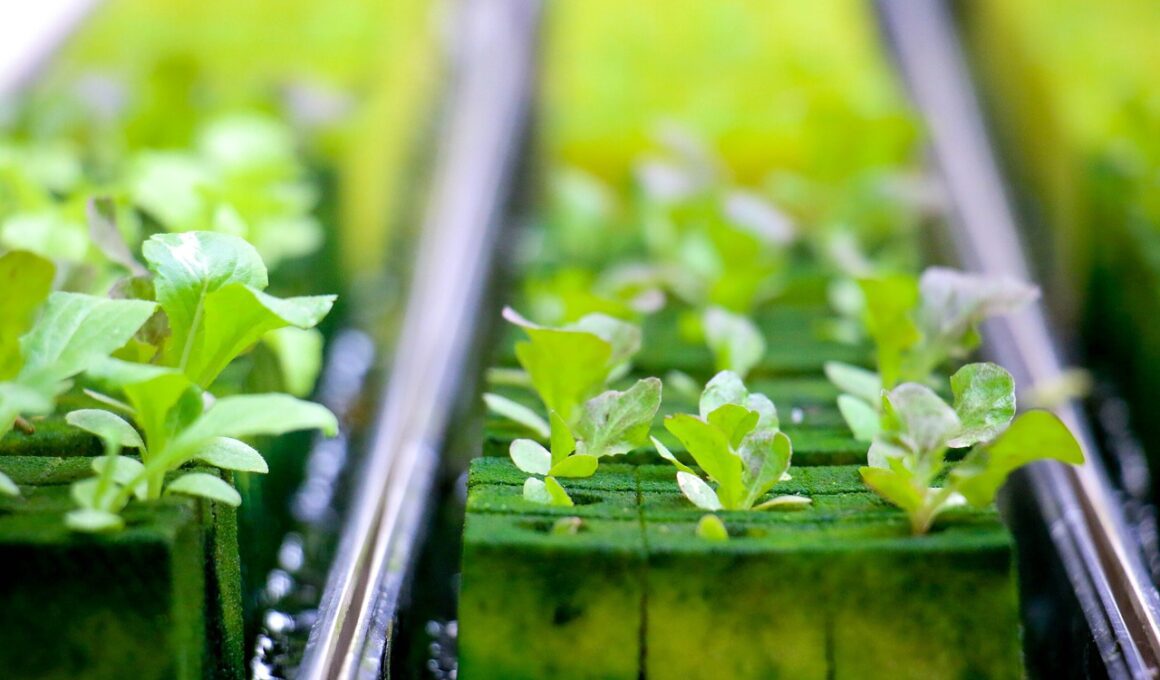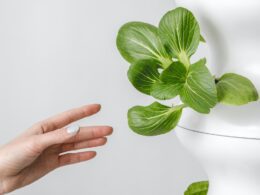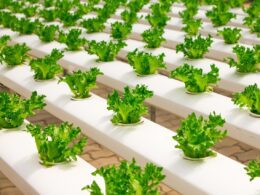Are you interested in growing plants but don’t have access to a garden or outdoor space? Hydroponics might be the solution for you!
Hydroponics is a method of growing plants without soil, using a nutrient-rich solution to nourish the plants. It’s a great option for beginners who want to start growing their own crops but don’t have the experience or space for a traditional garden.
In this article, we’ll guide you through the basics of growing hydroponics for beginners. We’ll cover everything from choosing the right plants to setting up and maintaining your hydroponic system.
With a little bit of knowledge and effort, you’ll be able to grow your own fresh produce right in the comfort of your own home. So, let’s get started!
Choose the Right Plants
When selecting plants for hydroponic growing, it’s important to choose ones that are suitable for this type of cultivation. Not all plants can thrive in hydroponic systems, so it’s important to research which ones are best.
Look for plants that have a shallow root system and can grow well in water. Examples of hydroponic-friendly plants include lettuce, herbs, tomatoes, and strawberries.
In addition to plant selection, it’s important to consider the growing conditions in your hydroponic system. Make sure to provide adequate lighting, nutrients, and water for your plants. You may also need to adjust the pH level of the water to optimize plant growth.
Different plants have different requirements, so it’s important to research the needs of the specific plants you choose to grow.
By selecting the right plants and providing the optimal growing conditions, you can successfully grow hydroponics as a beginner. There are many resources available online and in books to help guide you through the process.
With a little bit of research and experimentation, you can enjoy fresh, home-grown produce all year round.
Gather the Necessary Equipment
To get started with hydroponics, make sure you’ve got all the equipment you need. The first thing you’ll need is a container to hold the plants and water. There are many options available, from simple plastic buckets to more elaborate systems with pumps and filters.
You’ll also need hydroponic lighting to simulate sunlight and promote plant growth. LED lights are a popular choice because they’re energy-efficient and long-lasting.
Next, you’ll need to manage the pH level of the water. Plants need a specific pH level to absorb nutrients properly. You can test the pH level using a simple testing kit and adjust it as needed using pH up or pH down solutions. It’s important to monitor the pH level regularly to ensure your plants are healthy and thriving.
In addition to the basics, there are many other pieces of equipment you can add to your hydroponic system to improve its efficiency and effectiveness. For example, you might consider adding a timer to control the lighting schedule or a nutrient dosing system to automate the feeding process.
With the right equipment and a little bit of know-how, anyone can grow hydroponically and enjoy fresh, healthy produce all year round.
Is Hydroponics a Beginner-Friendly Planting Method to Maintain?
Maintaining hydroponics can be simplified with hydroponic maintenance made simple. Ideal for beginners, this planting method eliminates the need for traditional soil and allows plants to grow in a nutrient-rich water solution. With proper guidance and basic knowledge, anyone can easily grasp the concepts and techniques involved in this beginner-friendly approach to gardening.
Set Up Your Hydroponic System
Get ready to set up your hydroponic system and start growing fresh produce with ease! First, you need to choose the right hydroponic system type for your needs.
There are three main types: deep water culture, nutrient film technique, and drip systems. Deep water culture is the easiest and most affordable for beginners, while nutrient film technique is more complex and requires a bit more maintenance. Drip systems are the most versatile and can be used for a variety of plants, but they require more equipment and can be more expensive.
Next, consider the location of your hydroponic system. It should be in an area with good air circulation and access to electricity and water. You also want to make sure it’s not in direct sunlight, as this can cause algae growth in your nutrient solution. Additionally, make sure your chosen location is level and sturdy enough to support your system’s weight.
Lastly, be prepared to troubleshoot common setup issues, such as leaks or nutrient imbalances. Check your system regularly for any issues and make adjustments as needed. Don’t be afraid to ask for help if you’re unsure how to fix a problem.
With some patience and practice, you’ll be growing fresh produce in no time!
Maintain Your Hydroponic Garden
Maintaining your hydroponic garden is a breeze once you’ve got it set up and growing, so let’s dive into some easy tips to keep your plants thriving!
One of the most important things you’ll need to keep an eye on is the pH level of your nutrient solution. This is because the pH level affects the availability of nutrients to your plants. You’ll want to maintain a pH level of around 5.5 to 6.5 for most plants.
To manage your nutrient solution, you’ll need to check it regularly and adjust it as needed. This means measuring the nutrient levels and adding more nutrients or water as necessary.
You’ll also want to keep an eye on the temperature of your nutrient solution, as temperatures that are too high or too low can affect your plants’ growth. Ideally, the temperature should be between 65 and 75 degrees Fahrenheit.
Overall, maintaining your hydroponic garden is all about keeping an eye on the details. Regularly checking the pH level and nutrient solution, as well as the temperature, will help ensure that your plants stay healthy and thriving. With a little bit of effort and attention, you’ll be able to enjoy a flourishing hydroponic garden in no time!
Harvest and Enjoy Your Crops
Now that you’ve successfully grown your hydroponic garden, it’s time to harvest and enjoy your crops.
Knowing when to harvest is crucial to ensure that your produce is at its peak flavor and nutrition. When harvesting, make sure to do it properly to avoid damaging the plants.
Once you’ve harvested your crops, store and use them immediately to take advantage of their freshness and flavor.
Know When to Harvest
Knowing when to harvest is crucial to ensure that your plants are at their peak ripeness and ready for consumption. Harvesting techniques vary depending on the type of plant you’re growing, but generally, you should look for signs of maturity such as changes in color, size, and texture.
For example, if you’re growing tomatoes, you should wait until they turn a deep red color and feel slightly soft to the touch. On the other hand, if you’re growing lettuce, you should harvest the leaves when they’re young and tender.
Identifying peak ripeness can be tricky, but with practice, you’ll become more familiar with the signs. It’s important not to wait too long to harvest, as overripe plants can become tough, bitter, or develop a woody texture. Conversely, if you harvest too early, your plants may not have developed their full flavor or nutritional value.
Remember to always use clean, sharp tools when harvesting, and handle your plants gently to avoid damaging them. By following these tips, you can ensure that your hydroponic harvest is bountiful and delicious.
Harvest Crops Properly
To ensure that your hydroponic harvest is of the highest quality, it’s important to master the art of proper crop harvesting techniques. Maximizing yields and post-harvest handling are crucial steps in the process.
Here are some tips to help you harvest your crops properly:
- Check the maturity stage of your plants. You want to harvest when the plants have reached their peak, but not overripe.
- Use clean and sharp tools when harvesting. This will reduce the risk of damaging the crops or introducing bacteria.
- Harvest in the morning when the plants are hydrated. This will make the process easier and reduce stress on the plants.
- Handle the plants with care during the harvesting process. Rough handling can damage the leaves and stems, which can lead to decreased yields.
- Immediately store the harvested crops properly. This will help preserve the quality of the crops and prevent spoilage.
By following these tips, you can ensure that your hydroponic harvest is of the highest quality. Proper post-harvest handling is just as important as the harvesting process itself, so make sure to take the necessary steps to store your crops correctly.
Store and Use Your Fresh Produce
Ensure that the freshness and quality of your hydroponic harvest is preserved by properly storing and utilizing your produce. Food preservation is key to extending the shelf life of your crops and avoiding spoilage.
Start by properly washing your produce and drying them thoroughly before storing them in airtight containers. For leafy greens, wrap them in paper towels before placing them in a plastic bag to prevent moisture buildup. Fruits and vegetables that are prone to spoilage, such as tomatoes and strawberries, should be stored in the refrigerator to prolong their freshness.
Aside from proper storage, you can also make use of your fresh produce by trying out different recipe ideas. Hydroponic vegetables and herbs are perfect for creating nutritious and flavorful meals. Consider making a salad with your freshly harvested greens or using them as a topping for your favorite pizza.
You can also use herbs like basil and cilantro to add a burst of flavor to your dishes. With a little creativity, your hydroponic harvest can be transformed into delicious meals that you and your loved ones can enjoy.
Frequently Asked Questions
Can hydroponics be done indoors?
Indoor hydroponics offer a variety of benefits for those interested in growing their own plants. Whether you have limited outdoor space or simply prefer the convenience of an indoor setup, there are many types of hydroponic systems that can be used to grow everything from herbs and vegetables to flowers and fruit.
Some of the most popular indoor hydroponic systems include deep water culture, nutrient film technique, and drip irrigation. Each of these systems has its own unique advantages and disadvantages, so it’s important to do your research and find the one that best suits your needs.
With the right setup and a little bit of know-how, you can enjoy fresh, healthy plants all year round without ever having to set foot outside.
How often do I need to change the nutrient solution in my hydroponic system?
To maintain the health of your hydroponic plants, you should change the nutrient solution every 1-2 weeks. This ensures that the plants have access to fresh nutrients and prevents the buildup of harmful minerals.
If you notice nutrient deficiencies such as yellowing leaves or stunted growth, it may be time to change the solution sooner. Troubleshooting these issues can be frustrating, but it’s important to stay vigilant and make adjustments as needed.
By staying on top of your nutrient solution changes and monitoring your plants closely, you can ensure a successful hydroponic grow.
Is it possible to grow hydroponic plants without using artificial lighting?
If you’re considering growing hydroponic plants, you might be wondering whether you can do it without artificial lighting. The answer is yes, but there are pros and cons to using natural lighting vs artificial lighting for hydroponics.
One of the benefits of using sunlight is that it’s free and provides a full spectrum of light that plants need to grow. However, natural lighting can be unpredictable and inconsistent, which can affect plant growth.
Artificial lighting, on the other hand, can be controlled and timed to provide consistent light, which can result in faster and more consistent plant growth. Ultimately, the choice of lighting depends on your specific needs and preferences, but it’s important to consider the pros and cons of each option before making a decision.
What are some common pests and diseases that can affect hydroponic plants?
To keep your hydroponic plants healthy, it’s important to be aware of the common pests and diseases that can affect them. Some of the most common pests include aphids, spider mites, and whiteflies, while common diseases include root rot and powdery mildew.
Preventive measures such as maintaining a clean growing environment, regularly inspecting plants for signs of pests and diseases, and using beneficial insects like ladybugs can help keep these issues at bay. If you do encounter pests or diseases, there are also natural remedies such as neem oil, garlic spray, and hydrogen peroxide that can be effective in treating them.
By taking these steps, you can ensure that your hydroponic plants remain healthy and free from pests and diseases.
Can I use tap water to fill my hydroponic system or do I need to use filtered water?
When it comes to filling your hydroponic system, you may wonder if it’s okay to use tap water. While tap water is generally safe to use, it’s important to note that it can contain impurities and chemicals that may harm your plants over time.
This is why many hydroponic growers opt to use filtered water instead. By using filtered water, you can remove any harmful substances and ensure that your plants receive only the best quality water.
In the end, the choice is yours, but using filtered water can provide numerous benefits for your hydroponic system and help your plants thrive.
Conclusion
So, congratulations on taking the first step towards growing your own hydroponic garden! By choosing the right plants, gathering the necessary equipment, setting up your hydroponic system, maintaining it, and harvesting your crops, you can be on your way to having a successful garden in no time.
Remember to do your research and choose plants that are suitable for hydroponic growing.
Gather all the necessary equipment and set up your hydroponic system properly.
Be sure to maintain your hydroponic garden by monitoring the pH levels, adding nutrients, and keeping the environment clean.
With these steps in mind, you can grow your own fresh and healthy produce right at home.
Good luck and happy growing!









